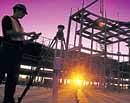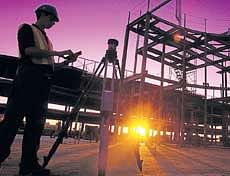

Underground structures, green buildings, seismic engineering and affordable housing — buzzwords in the realty sector. All big ideas that need to be harnessed. REDECON 2010 will provide a platform to bring together the best minds to discuss the latest developments in design and technology.
The event will comprise a series of lectures and an exhibition of Civil Engineering products and services organised by the Association of Consulting Civil Engineers (ACCE), Bangalore Centre.
M S Sudarshan, Chairman of Association of Consulting Civil Engineers, Bangalore Centre (ACCE) says, “A new-age civil engineer must acquire those extra skills to adapt to advanced design and construction methodologies.” And it’s not just about civil engineers. Academicians, equipment manufacturers, architects, government agencies, property developers and students will also be part of this event.
Underground structures is the theme at the ongoing three-day event that will be held till January 30 at the NIMHANS auditorium. Another new feature is a deminar — seminar + demonstration, giving a demo of equipment and construction techniques.
Green buildings
Among the hot topics to be discussed are green buildings for instance. Studies suggest that they account to one-third of global energy use and are major contributors to global warming. Says Ajit Sabnis, Chairman and Managing Director of Innovative Civil Engineering Conclave, “People’s understanding of the concept of green buildings/sustainable homes is often superficial. Energy saving is just one aspect. Right from the conceptualisation process to when the building is demolished, every process should be green.”
Adds MU Aswath, Secretary General of ACCE, “Right from the materials used while construction to the debris - post demolition should be recyclable.”
Through the seminar, Suryaprakash, an expert on green buildings from Hyderabad stresses upon the need for a set of guidelines closely linked to National Building Code/Regulation. With minimum building standards, climatic conditions of the region, the topography, availability of raw materials, proximity, permissible carbon emissions and energy use in homes need to be taken into consideration. Experts in the field need to be urged to adopt a pragmatic view while formulating guidelines based on geographic conditions.
“That eco-friendly buildings are costly to build is a myopic view. Although the initial construction costs are a little more as compared to conventional structures, in the long term they are more economical and beneficial for the builder and end user,” says Aswath. Sustainable buildings can lead to reduced operating costs thanks to increased productivity and usage of less energy and water, improved public and occupants’ health due to improved indoor air quality and reduced environmental impacts.
Affordable homes
Affordable housing is the other buzzword in the realty market and the conference. Arunjyoth Singh Bhalla, adept in affordable housing design points out that the aspiration of the upper and lower middle class to own their own home has spurred demand for affordable housing in the residential sector.
The possible solution is planned housing complexes which are designed as secure, well-integrated properties at affordable prices. A dearth of such developments has created a large gap between supply and demand.
According to Aswath, “The architectural and engineering team assigned for such projects carry a tremendous responsibility of meeting considerations of optimising cost. All they need to remember is that design does matter.” Adds Sabnis, “Better planning is the need of the hour. Many projects are delayed which leads to mounting of construction costs. Also, builders fail to use economical options like building common walls or using concrete frames for doors instead of wood. Paint it and you won’t be able to figure out the difference. Selecting the right materials and tools can bring down costs considerably.”
Underground structures
Another challenge that the country faces is the construction of underground structures.
It gains importance in Bangalore as the Metro has about 7.5 kms of underground tunnels and stations. The subsoil conditions of the city are not uniform and vary widely. This presents many challenges for underground construction.
Says Nirmal Prasad, Chairman of INSTRUCT, Vocational Training Institute for Civil Engineers, “The seminar aims to suggest solutions — better management and construction of the metro and also ensuring that it causes minimum inconvenience to Bangaloreans.” The ACCE also plans to highlight challenges that need to be confronted and addressed while building the underground sections of Bangalore Metro, and discuss some of the proposals that are being considered by the BMRCL to meet those challenges.
Seismic engineering
Neglected areas of the industry need to be highlighted like seismic engineering.
The Indian design and construction industry has glaring problems. For instance, a recent study states that 59 per cent of the Indian territory, which includes all metropolitan cities, is prone to seismic risks. Therefore more attention needs to be given for seismic design in India.
“With Bangalore coming under the seismic zone, the need to implement seismic engineering becomes imperative. This field will be highly useful and educative, given the very large number of underground structures which are currently being built and/or being planned in the country.”
It all boils down to design innovation, which is the need of the hour.
“Pathbreaking concepts like building bridges with stainless steel that avoids corrosion and gives them a longer life should be encouraged. Applying similar concepts to make structures maintenance free will give a boost to the Indian realty market too,” says Aswath.
As Sudarshan puts it, “The idea is to educate people and promote good practices in the construction industry.”